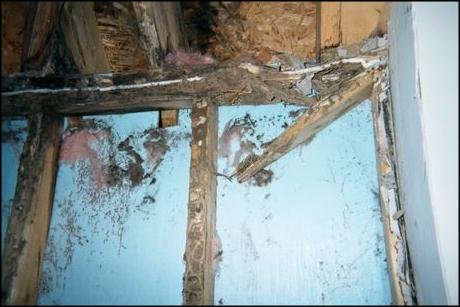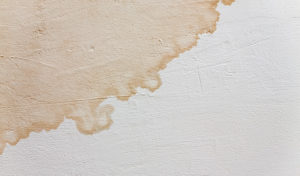Ways to Check and Repair Water Stains on Walls
Ways to Check and Repair Water Stains on Walls
Blog Article
What're your thoughts about Indicators of Water Damage Behind Walls?

Water discolorations on walls are not positive to the eyes. Your home must be without spots on the wall surfaces, roofing system, or floors. That is the excellent state of a home and also its structures. Yet, often it appears virtually unavoidable to experience water discolorations on walls in homes.
Home owners living in moist areas constantly deal with the fear of water stains on walls. With well-rounded and accurate information on the causes of water stains and timely repair service procedures, you will certainly always be an action in advance of such events.
3 Usual Sources Of Water Stains on Walls
Unlike popular belief, water stains on wall surfaces do not always stem from bad building products. There are a number of reasons for water discolorations on wall surfaces. These include:
Poor Water drainage
This will avoid water from seeping right into the walls. This links to too much dampness that you discover on the wall surfaces of your structure.
So, the leading root cause of wet wall surfaces, in this situation, can be a poor water drainage system. It can likewise be due to inadequate administration of sewage pipelines that run through the building.
Wet
When hot wet air consults with dry cool air, it triggers water beads to base on the walls of structures. When there is heavy steam from cooking or showers, this happens in washrooms as well as kitchens. The water beads can stain the bordering walls in these parts of your home as well as spread to other locations.
Moist or condensation influences the roofing system and also walls of structures. This causes them to show up darker than other locations of the home. When the wall is wet, it develops an appropriate setting for the growth of fungis as well as microorganisms. These might have damaging results on health, such as allergies as well as respiratory system problems.
Pipe Leaks
A lot of residences have a network of water pipes within the walls. This makes certain that the pipes are well away from the reach of harmful rats. It always enhances the feasibility of such pipelines, as there is little oxygen within the walls. This dissuades corrosion.
A disadvantage to this is that water leakage affects the walls of the building as well as creates prevalent damages. An indication of defective pipelines is the look of a water tarnish on the wall surface.
Water Discolorations on Wall Surface: Repair Tips
When dealing with water spots, house owners would usually desire a fast solution. They would certainly quickly understand this is disadvantageous as the water discolorations reoccur. So, below are a couple of handy pointers that will direct you in the repair work of water spots on walls:
Pro Tip
A houseplant in your house also raises its humidity. So, if your house is already moist, you may intend to introduce houseplants with marginal transpiration. An instance of suitable houseplants is succulents.
Final thought
No one wants to have water discolorations on wall surfaces in their home, it can take place to the finest of us. This article offers you take advantage of, as you currently understand how to manage this accident if it does take place.
It is always best to hire expert services to assist fix the problems in your home.
Occasionally it seems virtually unavoidable to experience water discolorations on walls in residences.
Contrary to preferred belief, water discolorations on walls do not constantly stem from poor structure materials. There are numerous causes of water spots on wall surfaces. The water droplets can tarnish the surrounding wall surfaces in these parts of your house and spread to other locations.
Here are a couple of helpful ideas that will certainly guide you in the repair service of water discolorations on walls:
CHECKING FOR WATER DAMAGE
Water damage can be costly, and it may begin before you even notice the first signs of trouble. Water damage can cause mold and mildew in your walls and floors, which can create an abundance of health concerns for your family. It can also lead to costly repairs of various appliances and general home fixtures. To avoid the pricey consequences of water damage, here are Warner Service s top 5 places you should check:
The walls The easiest place to spot the beginnings of water damage is on the walls and ceilings of your home. If water damage is present, there will most likely be water stains, especially around the windows and doorframes, and/or cracks in the drywall. If a stain looks unusual (discolored to brown, black or gray, raised texture), has a swollen appearance or is soft to the touch, contact a professional immediately. The pipes To avoid water damage, consistently check the pipes in your kitchen (especially the dishwasher and ice maker), bathrooms, laundry room (specifically washing machines) and basement for corrosion, leaks and water stains. Pay special attention to where the pipes connect in your home and the location of caulking around the bathroom fixtures, including toilets, sinks, showers and tubs. Missing or loose caulking and grout could be signs of leaking water. This seepage can also quickly cause mold and rust, so double check your water heater and tank for wet spots on the floor. The floor Water damage is very easy to spot on the floor. Look for any warping or buckling of the material, especially in the basement. If your home has wood flooring, look for bright white or dark stains. If your home has carpeting, keep it dry and clean. A damp carpet that smells of mold could cause water damage and health problems. To avoid this, consider installing floor pans under your appliances to help prevent damages from small, slow and undetected leaks. The basement and attic If your basement or attic smells odd check for mold and mildew around the area, especially the valley where the roof meets. While you are inspecting those areas, check for wall cracks, floor stains, rust and dampness in the insulation. If you live in a colder and/or rainier climate, perform routine checks for water damage from melting snow or ice and rain. The exterior Check the roof for damaged flashing and missing, cracked or curled shingles. There should also be no standing water anywhere outside your home. This could be caused by puddles, leaky rain gutters or hoses, poor drainage, or short gutter spouts. Invest in a sump pump system or water flow monitoring system, and perform routine maintenance on these outdoor appliances to avoid indoor water damage.

Hopefully you enjoyed our topic about Water Stains on Walls. Thanks a lot for finding the time to browse our post. In case you enjoyed our article please don't forget to pass it around. We take joy in reading our article about .
Click Here! Report this page